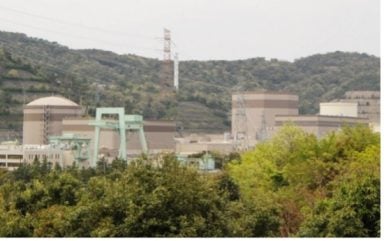
Japan’s Nuclear Regulation Authority (NRA) has officially ruled that unit 2 at Japan Atomic Power company’s (JAPC’s) Tsuruga NPP in Fukui Prefecture is non-compliant with the new safety standards, following a public comment period. All five NRA commissioners agreed on the decision. This is the first time the NRA has reached a nonconformity decision for a nuclear reactor since its establishment in 2012.
NRA in August had adopted a draft screening report concluding that the Tsuruga 2 reactor did not meet the safety standards after a screening process taking nearly nine years. The official decision now makes the nuclear reactor’s restart virtually impossible. However, it is technically possible for JAPC to reapply to restart the reactor. JAPC has indicated that it will submit a reapplication after conducting an additional investigation.
NRA received 282 public opinions in the course of 30 days, 67 of which were treated as opinions related to the screening process, according to NRA’s secretariat. While the majority of such opinions were calls for geological evidence, some said NRA should not accept a reapplication from the plant operator unless there is new scientific evidence. NRA said it will strictly examine any reapplication.
JAPC said: “We will work toward reapplying for permission to change the installation of Tsuruga nuclear power plant unit 2 and starting operation. We will specify the content of the additional investigation required for the application, taking into account the opinions of external experts.”
New regulatory standards, established in 2013 in the wake of the 2011 nuclear disaster at the Fukushima Daiichi NPP, do not allow reactor buildings or other important facilities to be built on active faults. The key point of the NRA’s review of Tsuruga 2 was to establish whether a fault near the reactor building called “K” may move in the future and whether the K fault is connected to a fault directly under the building.
NRA concluded that it cannot rule out the possibilities of the K fault moving in the future or of the K fault being connected with the other fault. This resulted in the decision that the reactor did not meet the safety standards. JAPC has denied both possibilities, urging NRA to continue its review. NRA, however, refused.
During the Tsuruga 2 screening process, which was launched in 2015, many issues were discovered relating to documents submitted by JAPC, including unauthorised changes to geological data. This led to an unprecedented sequence of events including two screening suspensions and an administrative guidance issued by the NRA.
NRA Chairman Shinsuke Yamanaka said “it was a big decision”, adding that the decision “is no different at all from those made so far, in that we conducted strict screening from scientific and technical standpoints”.






